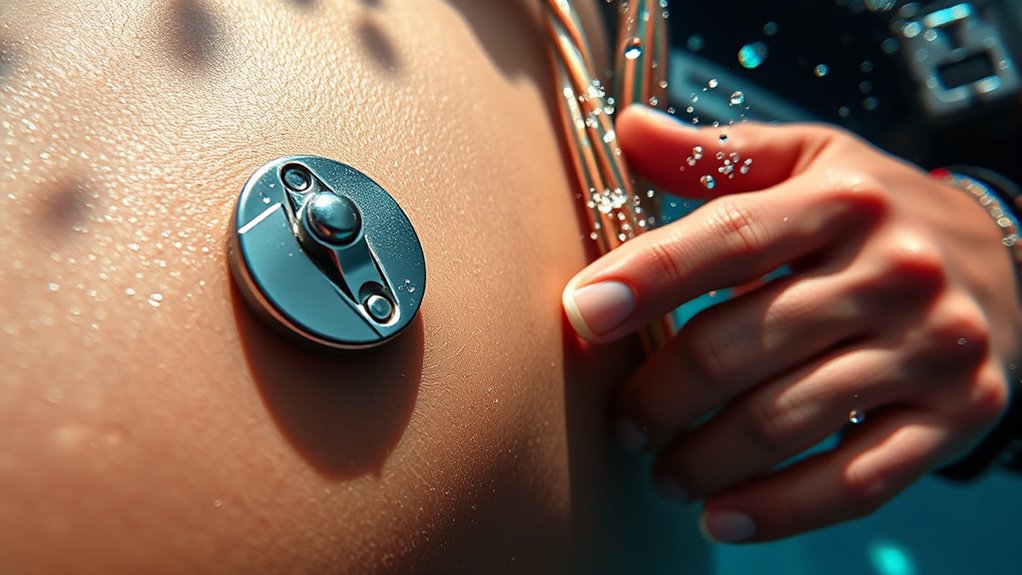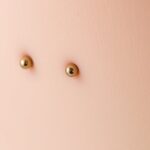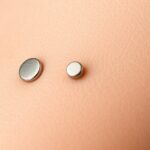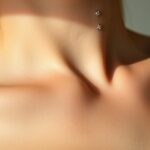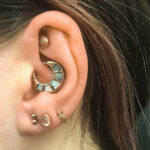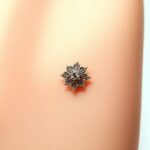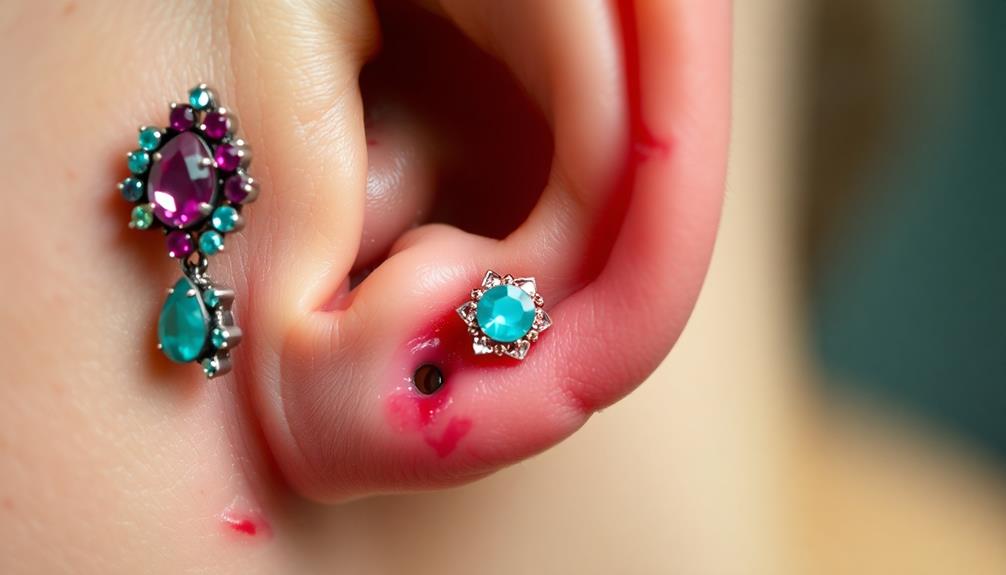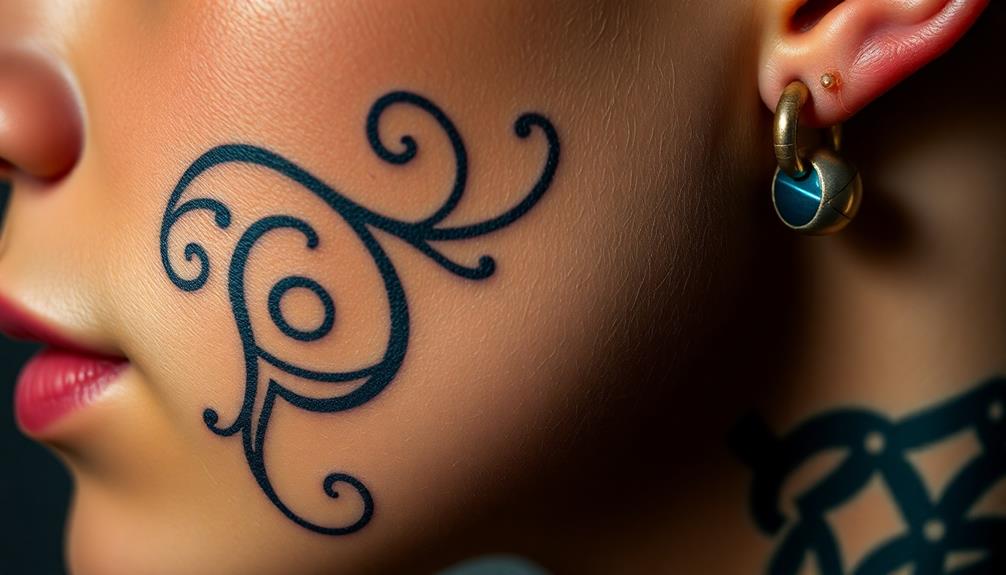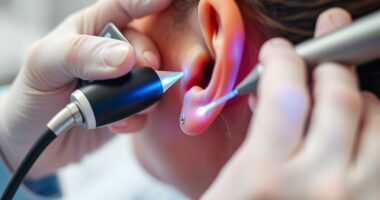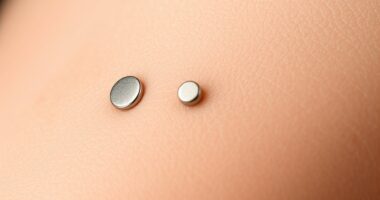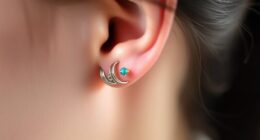Skin divers are quick-healing surface piercings that sit just beneath the skin and are easier to maintain, but they pose a higher risk of infection and can be knocked out easily. Dermal anchors are implanted into the skin for a more permanent and stable look, though they take longer to heal and require meticulous aftercare. If you want to learn about the benefits and drawbacks of each option, keep exploring the differences.
Key Takeaways
- Skin divers heal faster but are more exposed to environmental contaminants and accidental removal risks.
- Dermal anchors provide more stability and permanence but require a longer, more invasive healing process.
- Surface piercings (skin divers) have a higher risk of superficial infections if hygiene isn’t maintained.
- Dermal anchors are less likely to catch or snag once healed, making them suitable for active lifestyles.
- Proper aftercare is essential for both, but dermal anchors may need more medical intervention if infected.
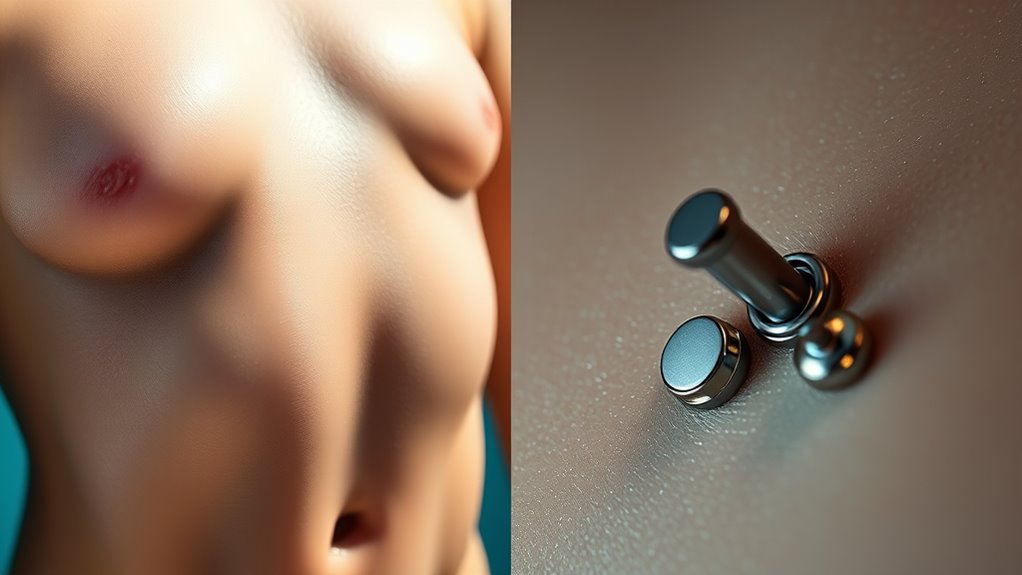
Have you ever wondered how skin divers and dermal anchors differ when it comes to body jewelry? Both options involve adding jewelry directly into your skin, but they do so in distinct ways, which impacts the healing process and potential infection risks. Understanding these differences can help you decide which method suits you best.
Skin divers are essentially surface piercings that sit just beneath the skin’s surface, often secured with a flat or curved disc that rests against your skin. Because they don’t penetrate deeply, the healing process tends to be quicker—usually a few weeks to a couple of months—assuming proper aftercare. However, since they sit close to the skin’s surface, infection risks are present if hygiene isn’t maintained. Dirt, bacteria, or improper handling can cause swelling, redness, or even more serious infections. The shallow placement means you need to be diligent with cleaning and avoid unnecessary trauma to prevent complications.
Skin divers are surface piercings that heal quickly but require diligent hygiene to prevent infection.
On the other hand, dermal anchors involve inserting a small, T-shaped or screw-like jewelry directly into the dermis layer of your skin. This method requires a more invasive procedure, often performed by professionals with sterile equipment. Because of the deeper placement, the healing process can take longer—sometimes up to several months—depending on the location and your body’s healing ability. While the initial healing period is extended, dermal anchors tend to be more stable once healed, reducing the chances of the jewelry catching or falling out. Infection risks are still present, but since they are embedded deeper, a proper professional installation and meticulous aftercare considerably lower this risk. Nonetheless, if hygiene isn’t maintained during healing, infections can develop deeper within the tissue, which may require medical intervention. Additionally, the biological tissue response plays a role in how well the body accepts and heals around the anchor.
Both methods demand attentive aftercare, but with dermal anchors, you must be extra cautious during the healing phase because any infection can be more challenging to treat. For skin divers, quick healing is appealing, but the surface-level placement makes them more susceptible to external contaminants. For dermal anchors, the longer healing process may seem formidable, but their secure placement often makes them better suited for those wanting a permanent, less prone-to-catching body jewelry option.
Frequently Asked Questions
Which Implant Type Is More Suitable for Active Lifestyles?
For active lifestyles, dermal anchors are more suitable because they offer better flexibility considerations and are less prone to snagging or displacement during activities. They’re securely embedded, minimizing movement and discomfort. If you prioritize aesthetic preferences, dermal anchors often provide a more seamless look. Skin divers, while less invasive, may not withstand intense physical activity as well. Choose dermal anchors for durability and comfort during your active routines.
How Long Does Each Implant Typically Last Before Replacement?
You can expect skin divers to last around 5 to 10 years before needing replacement, depending on your care and lifestyle. Dermal anchors typically have a shorter lifespan of about 2 to 5 years due to higher exposure and stress. Regular check-ups help monitor implant longevity and determine appropriate replacement intervals. Proper maintenance and avoiding trauma can extend their lifespan, ensuring your implant stays secure and looks great longer.
Are There Differences in Infection Risks Between Skin Divers and Dermal Anchors?
Think of infection risks like steering a river—some currents are calmer, others more treacherous. Generally, dermal anchors have slightly higher complication rates due to their invasive placement, increasing infection comparison concerns. Skin divers, being less invasive, tend to have lower infection risks. Regular cleaning and proper aftercare help minimize complications for both, but always stay vigilant, as any breach in your skin can introduce bacteria and cause infections.
Can Either Implant Be Removed Easily if Desired?
Yes, both skin divers and dermal anchors can be taken out if you decide to do so. The implant removal process is generally straightforward, but it depends on how long you’ve had the implant and your healing process. You should consult your professional piercer or dermatologist, as they’ll ensure proper removal and help you understand what to expect during healing afterward. Keep in mind, healing times vary for each individual.
What Are the Differences in Maintenance and Aftercare?
You’ll find that maintenance and aftercare differ mainly in healing time and scarring potential. Skin divers often require less aftercare, with quicker healing, but they may have a higher scarring potential if not cared for properly. Dermal anchors usually need more diligent cleaning and monitoring during healing, which can extend the healing time. Proper aftercare minimizes complications and scarring, ensuring your piercing heals smoothly and looks great long-term.
Conclusion
Choosing between skin divers and dermal anchors is like deciding whether to ride a wild stallion or tame a dragon. While skin divers are subtle and temporary, dermal anchors promise a permanent boldness that can redefine your entire existence. Think carefully—your body is your canvas, and this decision isn’t just about jewelry; it’s about whether you want to be a fleeting masterpiece or a legend etched in skin forever. The choice shapes your story—make it unforgettable.

